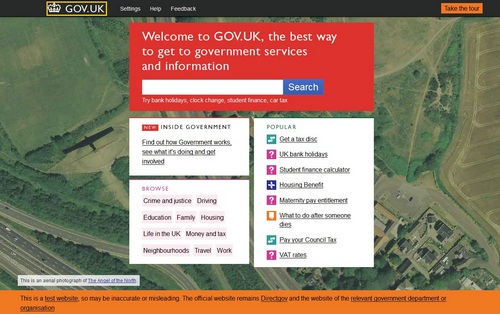The Government Digital Service (GDS) has created an online tool which lists 1,000 transactional government services. The development is likely to be a key step toward digital public services as the data it provides will help Whitehall departments and local authorities make a compelling case for digitisation.
Around 1.5 billion transactions go through local and central government each year.

The data tool aims to help public bodies systematically measure and improve their performance, and is the first time this information has been brought together in one place, according to Richard Sargeant, director of performance and delivery at GDS and former head of public policy at Google.
Of the 650 central government services, the top 10% account for 97% of the total volume of transactions, with over half of the services involving permission requests to do something, he said.
"The ultimate aim of all this, of course, is to identify opportunities to make more services digital by default," said Sargeant.
"Putting services online, and doing it well, will waste less time, freeing people and businesses to do the important things. It will also stimulate a competitive digital environment, particularly for the thousands of small and medium enterprises who can provide world-leading digital services. And finally, it will save a very significant amount of money for taxpayers, and for users," he said.
One significant complaint about government has been its failure to use meaningful business information to measure expenditure. As such, the transactional services tool could become a key method for analysing the costs of services.
Once costs are attached to these newly published transactions – a development which is expected to take place later this year – departments should be able to see the measurable business benefits of making transactional services digital by default.
The estimated cost savings for improving digital information services are already expected to be huge. According to GDS director Mike Bracken, central government received 693 million phone calls last year, with 150 million estimated to have been the result of failed or incomplete transactions.
With each phone transaction costing £6.28, a more user-centric approach to digitisation of such services could lead to a cost saving of nearly £942m per year. "The prize is huge," he said.
The cost savings from moving transactional services to a digital-by-default delivery are likely to be much higher.
However, adding the transactional layer to GDS' Gov.UK service is no small challenge, and is likely to be the organisation's largest task ahead. Compared to the rest of Whitehall, GDS is tiny and will have its work cut out.
Speaking to Computer Weekly at the launch of Gov.UK earlier this year, Bracken said: "The transaction layer is a much bigger ask, as we have to go to the technology stack, look at the integrated service delivery, look at contact centres – that is the future challenge for GDS."
Many existing transactions are also tied into expensive, long-term contracts with big system integrators, which may be complicated to unravel.
However, if the adage of "what is measured is treasured" is to be believed, then this tool could be a key step in making the case for digital.
In times of such austerity, it's the numbers that will do the talking.





